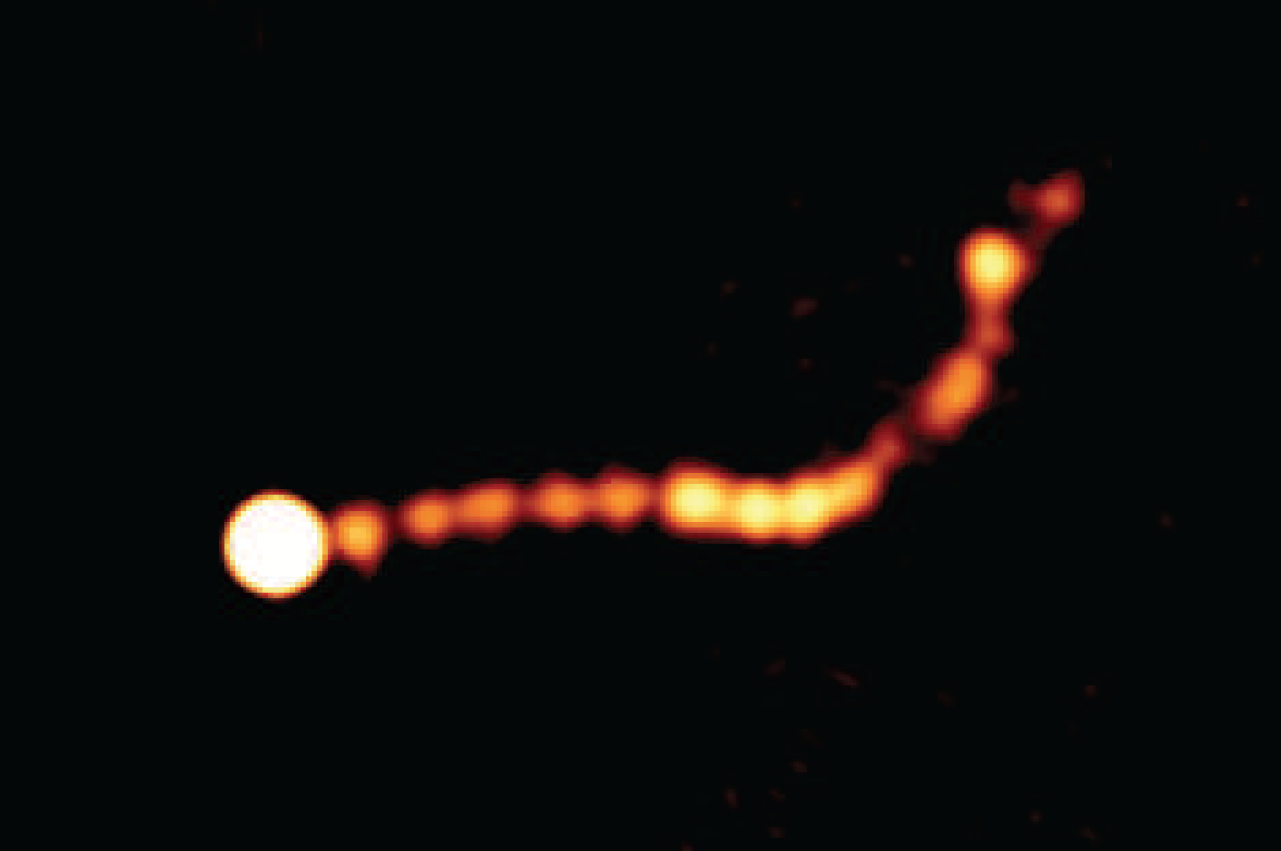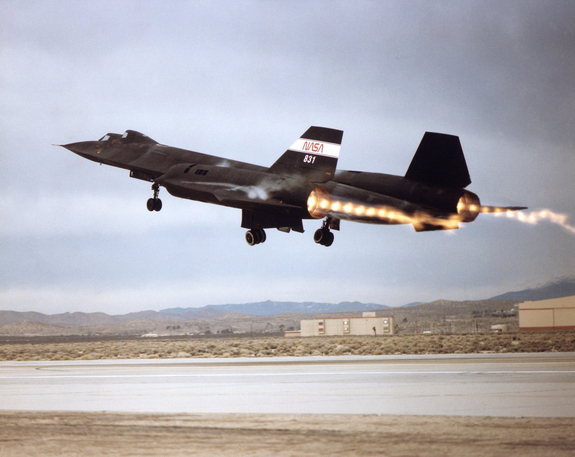Galaxy's Giant Black Hole Jet a Cosmic Afterburner

A humongous jet of material ejected from the center of a distant galaxy looks strikingly similar to the afterburner flow of a fighter jet, and scientists say it may have formed in a similar way.
Except, in this case a supermassive black hole is subbing in for the jet engine.
The extragalactic jet is a stream of material extending more than 2 million light-years, making it larger than our entire Milky Way galaxy. The jet, known as PKS 0637-752, was recently captured in a new image by the Australia Telescope Compact Array in New South Wales, Australia.
Jets like this are common throughout the universe, and are thought to be formed when large amounts of matter fall into the giant black holes occupying the centers of many galaxies. Material in such jets races outward at nearly the speed of light, and they are some of the largest objects in the universe. [Best-Ever View of Black Hole Jets (Video)]
"Massive jets like this one have been studied for decades, since the beginning of radio astronomy, but we still don't understand exactly how they are produced or what they're made of," study leader Leith Godfrey, of the Curtin University node of the International Centre for Radio Astronomy Research in Australia, said in a statement.
The new jet photo reveals regularly spaced bright spots similar to the brighter diamond-shaped areas seen in jet engine afterburners.
"One intriguing possibility is that the pattern we see in this cosmic jet is produced in the same way as the pattern in the exhaust from fighter jet engines," Godfrey said.
Get the world’s most fascinating discoveries delivered straight to your inbox.
"If the brighter patches are caused by the same process in astronomical jets as they are in earthly jet engines, then the distance between them can give us important information about the power of the jet and the density of the surrounding space," he added.
The researchers hope the new findings could help them better understand the nature of black hole jets and the ways they affect their host galaxies.
"This new image of the jet shows detail we've never seen before and the pattern we revealed provides a clue to how jets like this one work," said Jim Lovell, a member of the research team from the University of Tasmania. "This particular jet emits a lot of X-rays, which is hard to explain with our current models. Our new find is a step forward in understanding how these giant objects emit so much X-ray radiation, and indirectly, will help us understand how the jet came to be."
This story was provided by SPACE.com, sister site to LiveScience. You can follow SPACE.com on Twitter @Spacedotcom. We're also on Facebook & Google+.





